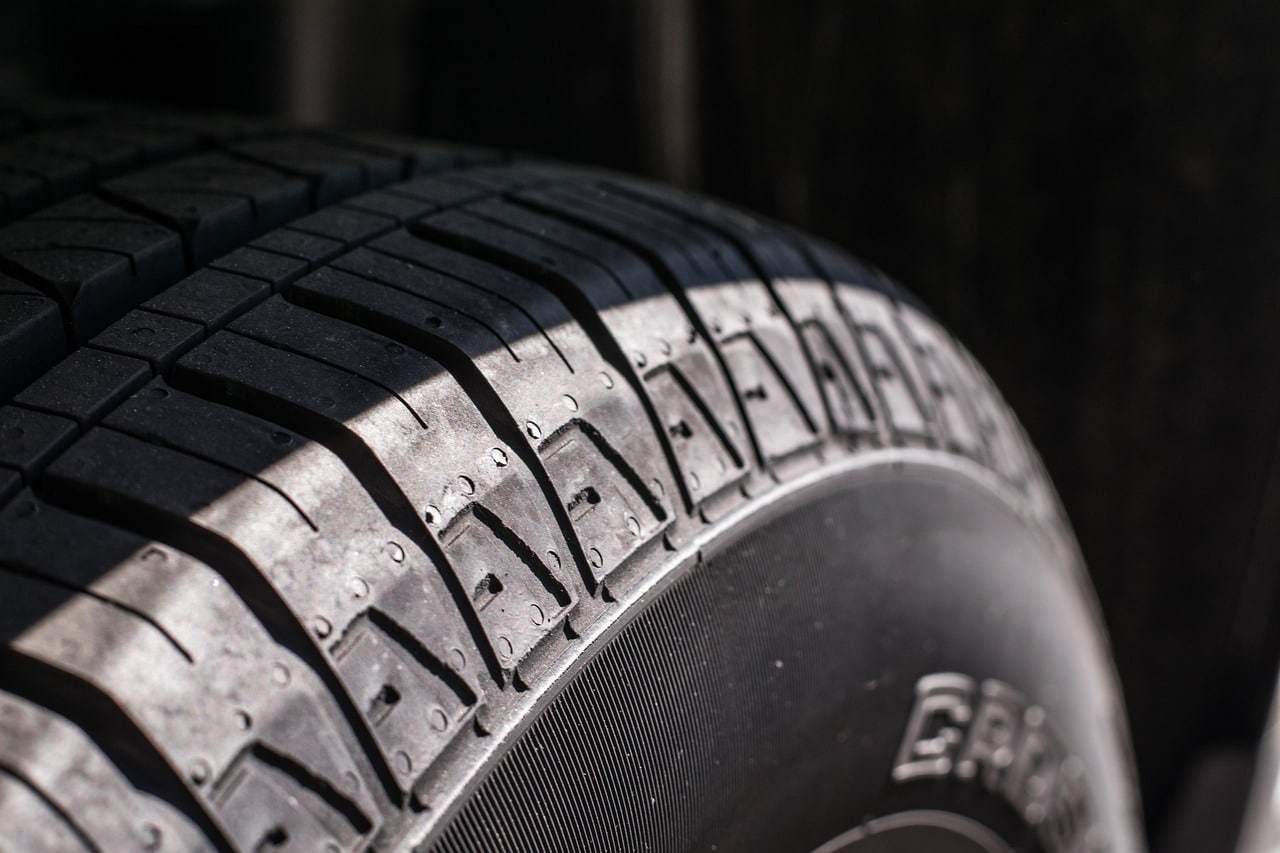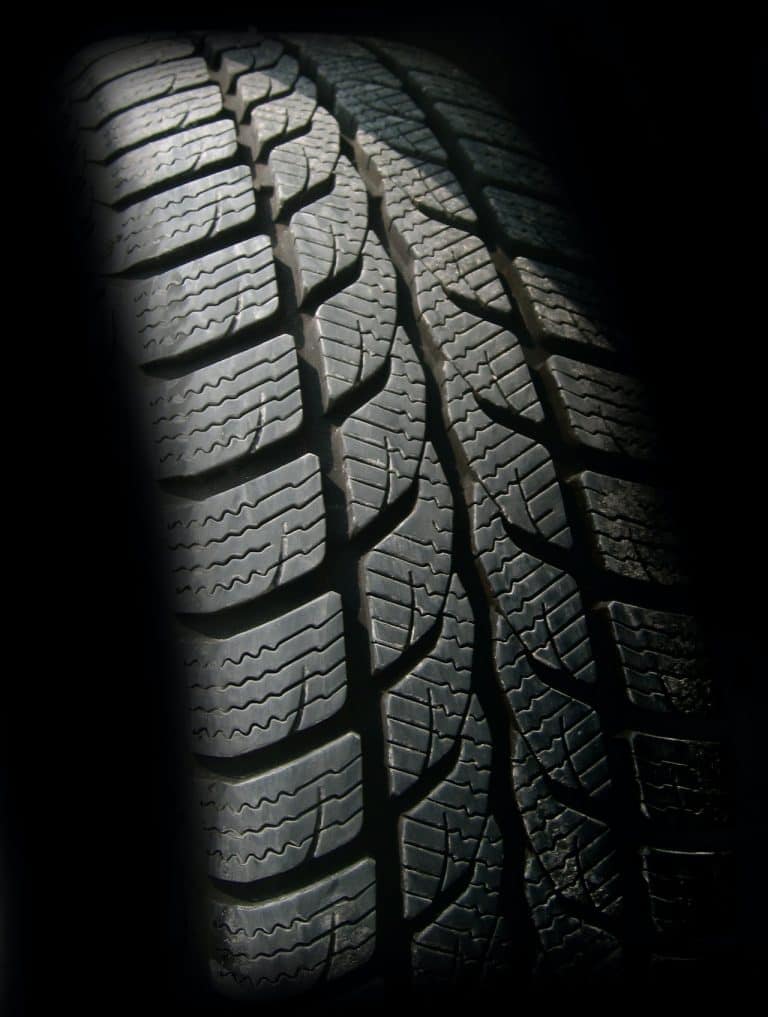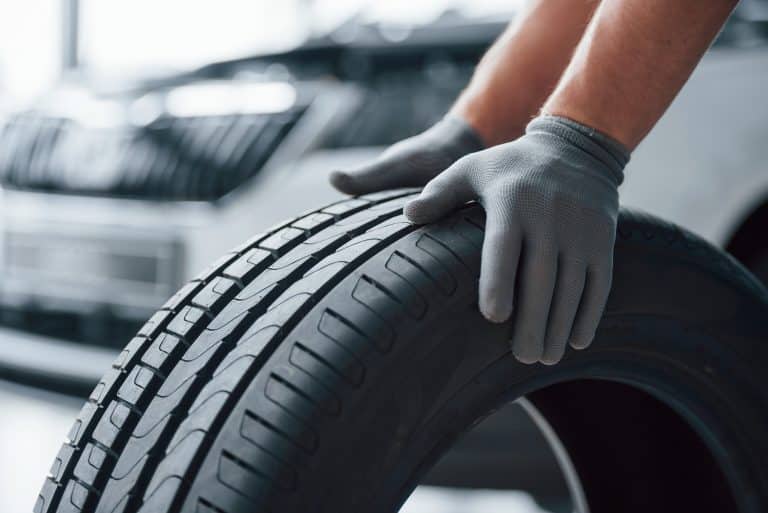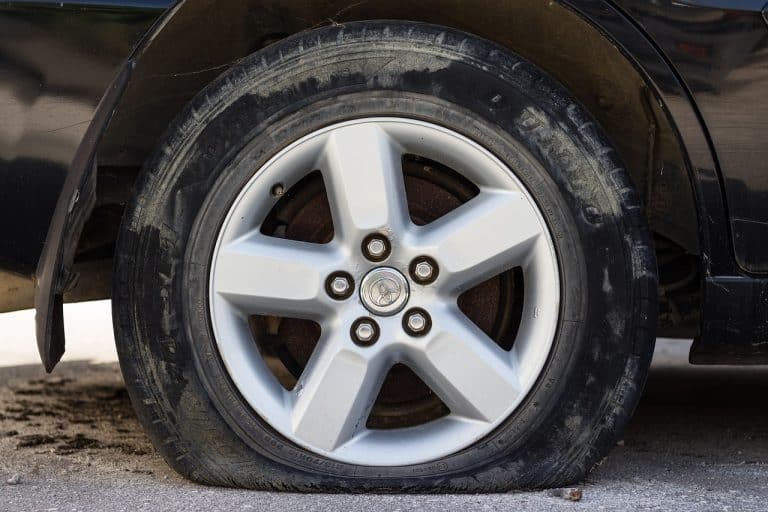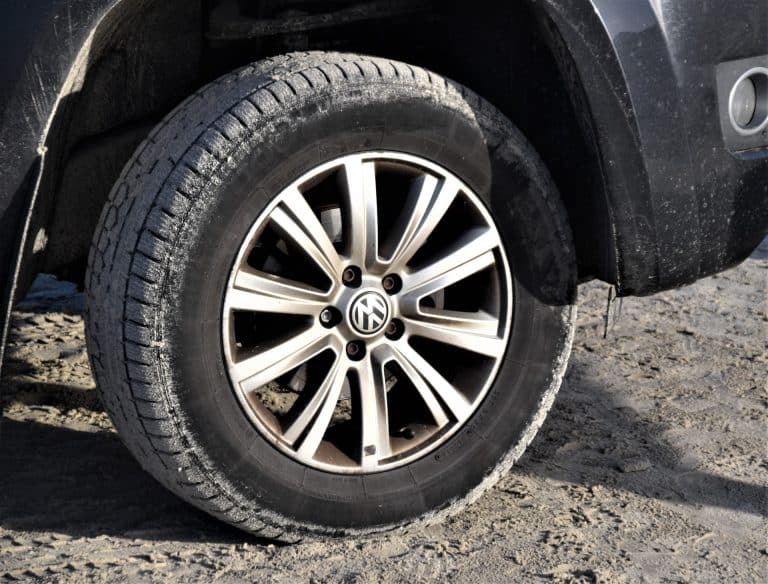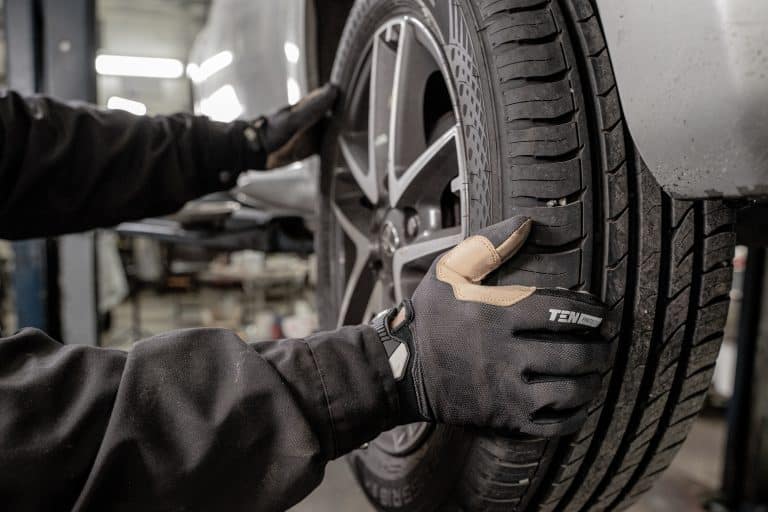Mounting Tires the Opposite Way
Like many elements of a car, the tires play an important role and they need to be set properly. For fitting tires, multiple aspects need to be addressed. They range from size to pressure, and the most important one I’ll be talking about today – direction.
Tires have evolved a lot in the past century, leaving us with plenty of choices. The tread pattern comes in multiple options, each one having its own pros and cons. Check out the guide if you want to learn more.
For today’s guide, I’ll be focusing more on the direction of the pattern. There are two types of tires – directional and non-directional. When it comes to fitting, directional tires are the ones where you’ll need to be more careful. You should follow this guide carefully because they are designed to be fitted in a specific way.
Can you Mount Tires the Opposite Way?
It depends on the type of pattern. Non-directional tires can be mounted any way you want. Regardless of how you rotate them, the “direction” remains the same. With directional tires, you need to be mindful of which way they are mounted. Fitting them the opposite way will lead to reduced performance and lifespan.
Directional vs Non-Directional Patterns
Before I explain if you should or shouldn’t mount the tires oppositely, let’s first talk about the patterns.
Directional Pattern
As the name suggests, this is the type of pattern that follows a certain direction by design. When looking at the design, you’ll see the grooves following the direction in a certain way. This depends on which way you’re looking at the tire. When mounted to a car, the pattern should face downward, something similar to the letter V.
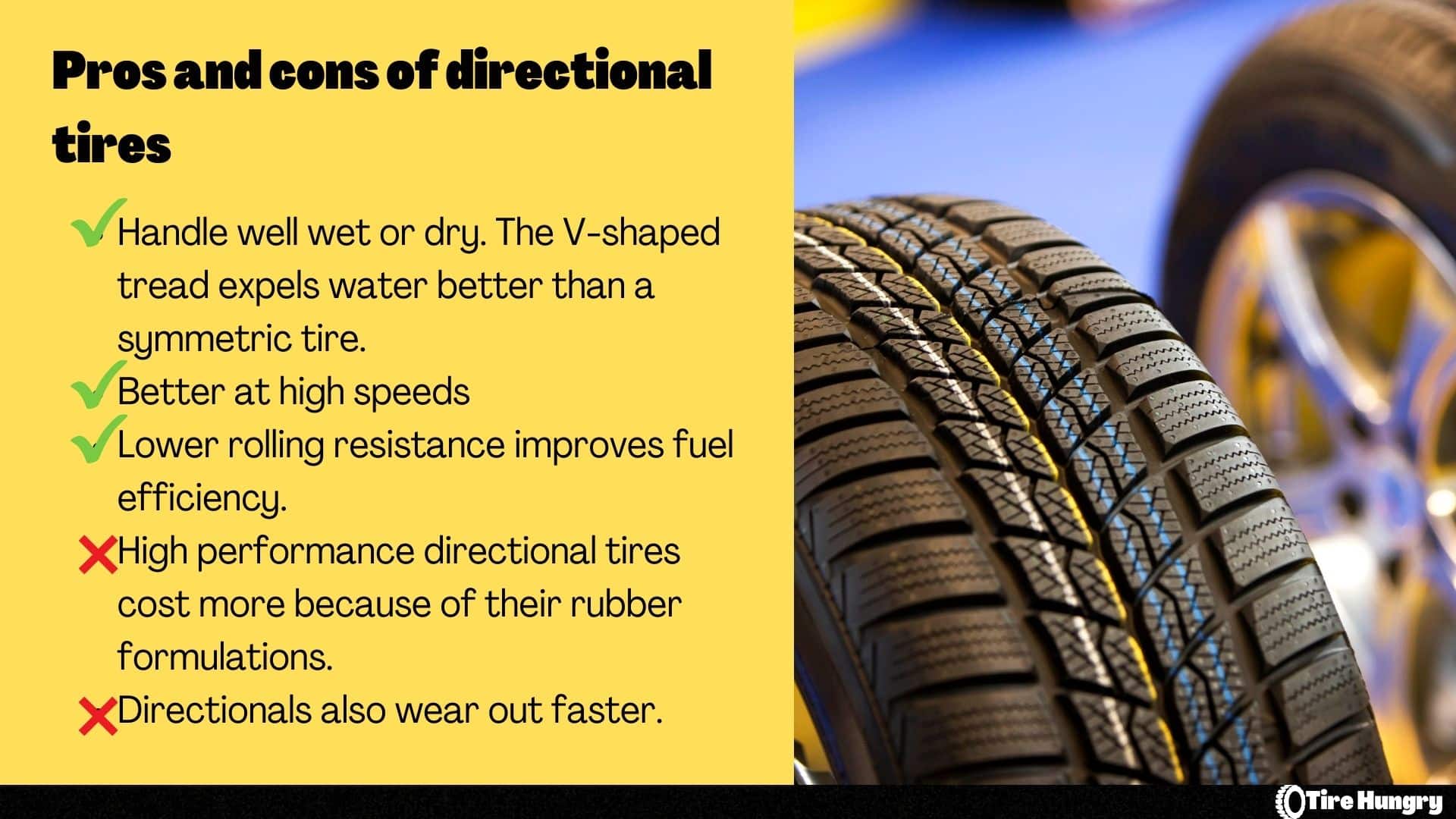
The idea behind this is pretty simple. Manufacturers go for this design because as the tire rolls, the pattern provides stability in a straight line. An additional bonus to this design is the improved aquaplaning resistance. Since the water won’t need to go through a maze of channels, the tire will evacuate it more efficiently.
Stability and handling are the two main advantages that directional tires offer. The “pointy” pattern means that you’ll get more direct handling and the tire will follow the path you need it to. Next up is stability, which I already mentioned.
As perfect as things seem, directional tires don’t come with no drawbacks. Considering that these tires are more towards the performance side of things, noise levels aren’t the best. Don’t get me wrong, I’m not talking about loud tires, but when compared with its non-directional patterns, they aren’t as quiet.
Non-Directional Pattern
With everything I said about the directional pattern in tires, with non-directional, everything is the opposite. Since these patterns aren’t directional, you won’t see V-shaped designs here. There are several variations here, but regardless of which one you go for, you’ll be looking at symmetrical tires, in most cases. You can find asymmetrical tires in this group as well.
If we look at these as a whole, most non-directional tires are pretty much touring tires. Yes, there are exceptions, but the idea is that they cover the segment that the directional ones don’t. With this design, the tread blocks have a more block-like shape. There are some advantages, and you should expect some disadvantages.
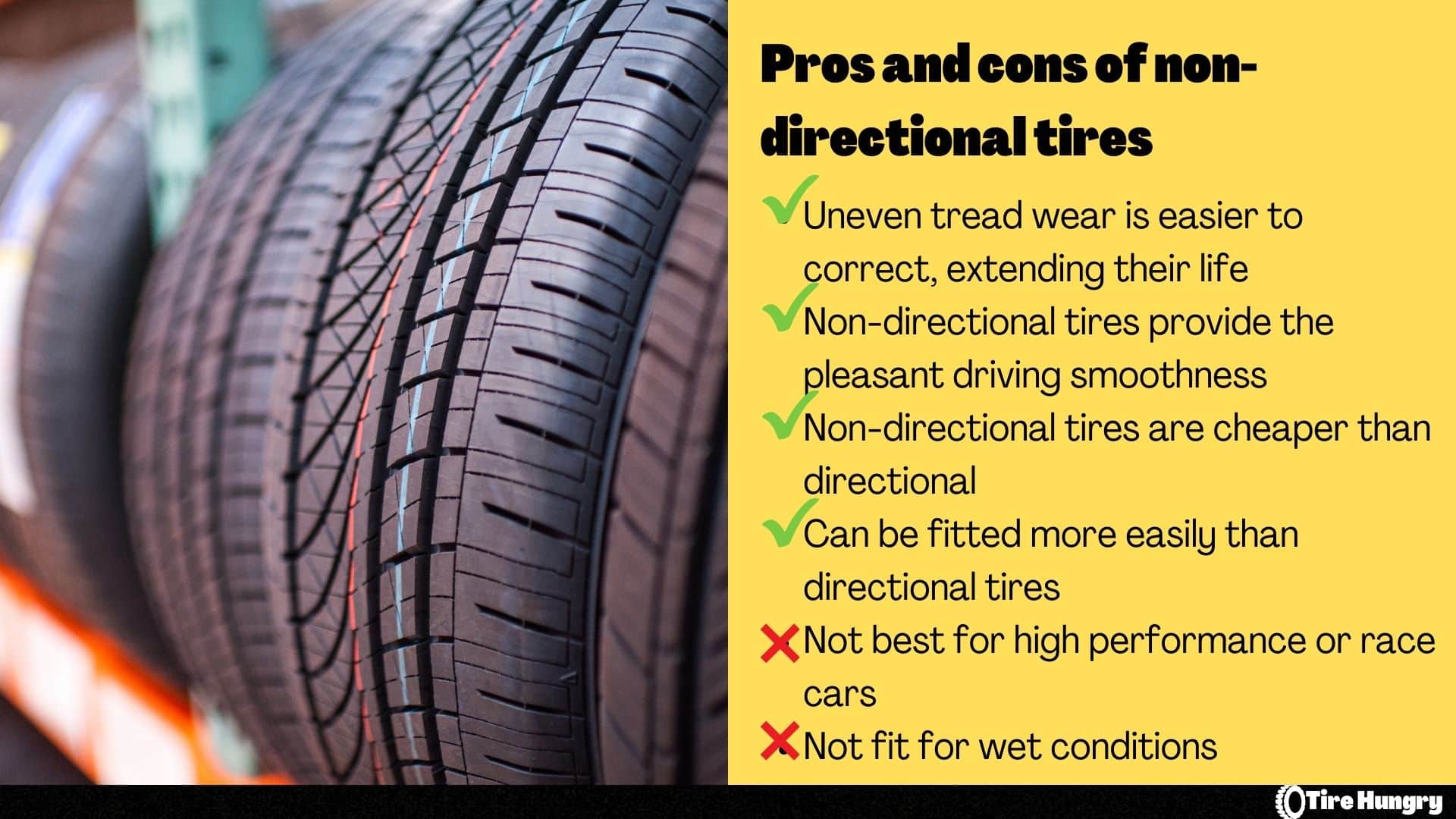
Among the many advantages that non-directional tires offer are noise levels. Like I said with the directional ones, there are exceptions, and the differences aren’t massive. In tires from a similar class, you may see some slight differences.
Price is the second advantage and, again, we’re not talking about some crazy differences. Generally, non-directional tires should be cheaper than directional ones, which is why we see this design mostly with touring tires.
Can you Mount Tires the Opposite Way?
Now it’s time to answer the big question, and the answer is: Yes and no and it depends on the type of design the tire has.
Mounting Directional Tires the Opposite Way
Let’s start with the directional ones, where the answer is an absolute no. Fitting a directional tire backward will open up tons of problems, all of which are related to performance. A tire with a directional pattern will have pretty good aquaplaning resistance. With that said, flipping the pattern oppositely will have the opposite effect. Even at smaller speeds, the stability in deeper water patches will be terrible.
Speaking of stability, this is the second problem you’ll face. As you drive, you’ll be going against the natural pattern of the grooves, so the tire won’t be as stable and the car won’t handle as it should. This also opens up another problem with longevity.
Going in the opposite direction will reduce the tire’s lifespan. The treadlife will probably be cut in half because the tire will drag across the tarmac.
You’re probably thinking: but I have directional tires and I drive my car in reverse sometimes. The emphasis here is “sometimes” and how you drive in reverse. Even Honda fanboys with tuned Civics don’t redline their cars in reverse, so they’re not doing more than a few miles per hour. I doubt anyone I doing 70 on the highway in reverse. With all of this in mind, driving a bit at very slow speeds in reverse with directional tires isn’t a massive problem.
Mounting Non-Directional Tires the Opposite Way
With non-directional tires, things are different, but there’s a simple rule.
Symmetric tires are the simplest, as there are no rules about how you fit them. The inner and outer sides are identical regardless of how you look at them, so fitting them isn’t something you should give a lot of thought. The only thing you should consider is if you rotate them, which rotation pattern you want to follow.
With asymmetric tires, things are different. Since they are non-directional, they can rotate either way. The most important thing to keep in mind here is which side should be mounted as an outer one. This makes them limited, meaning that you won’t have a lot of flexibility as with symmetric ones. In many ways, with some models, you’re looking at tires that cannot be mounted oppositely.
How to Tell if a Tire Can be Mounted in the Opposite Way?
Let’s say you’re a DIY type of owner that has the tools to get the job done at home. To make sure you’re not making a mistake, you need to pay a bit of attention.
Manufacturers like to make lives easier for tire technicians and avoid mistakes, so they design special markings on the sidewall. There are two things to look out for.
With directional tires, manufacturers have small arrows on the sidewall that show which way the tire should roll. On the other hand, with asymmetric tires, you may not have a rotation direction, but there will be a marking about which side should be mounted as an outer one. The outer side of the tire is the one you can see when the tire is fitted. On the other hand, the inner one is on the other side, facing the wheel well and the suspension components.
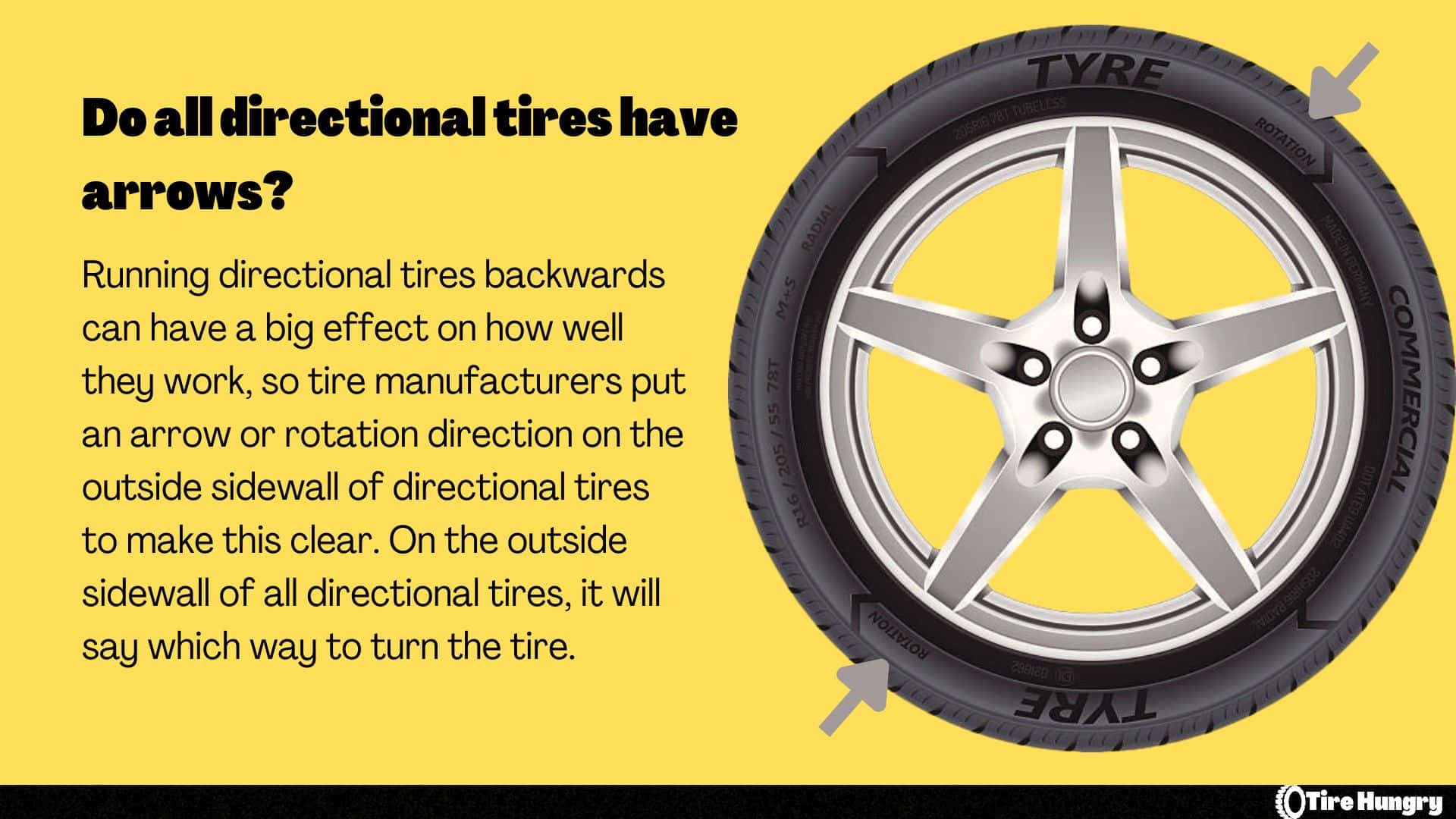
Symmetric tires are the easiest to work with. Since there’s no specific way in which they should be mounted, there are no markings and you fit them any way you want.
Considering how important this process is, my recommendation is to go to a tire shop if you’re not sure. It’s easy to make a mistake, which at first glance may seem like it’s not a major one, but it can complicate things. Tire shops are experienced and have all the tools needed. The process is quick and relatively inexpensive.
If you want to do it by yourself, go for it, as long as you have the required tools and you’re positive that you’re doing it right.
Conclusion
You may think that fitting a set of tires is simple, but it’s not. The rotation orientation is an important factor to consider in order to get optimal performance.
Considering that there are several types of patterns, there are several ways in which tires can be mounted. Some have no specific orientation, while for others, a rotation direction can be crucial.
Manufacturers design some patterns to rotate in a specific way, so mounting them in the opposite way isn’t a good idea. You’ll lose a lot of performance and driving with that can sometimes be dangerous.
All ties can be fitted oppositely, technically, but not all of them should be driven like that. For those that want to do the process at home, I’d recommend to check the sidewall. There will be markings that will explain which way a tire should face. If there isn’t one, then it doesn’t matter.
My recommendation is to leave this to the professionals. Most of us know the how, but it takes some specialized tools which we don’t have. This is why most people go to tire shops for this and don’t worry about making a mistake.
